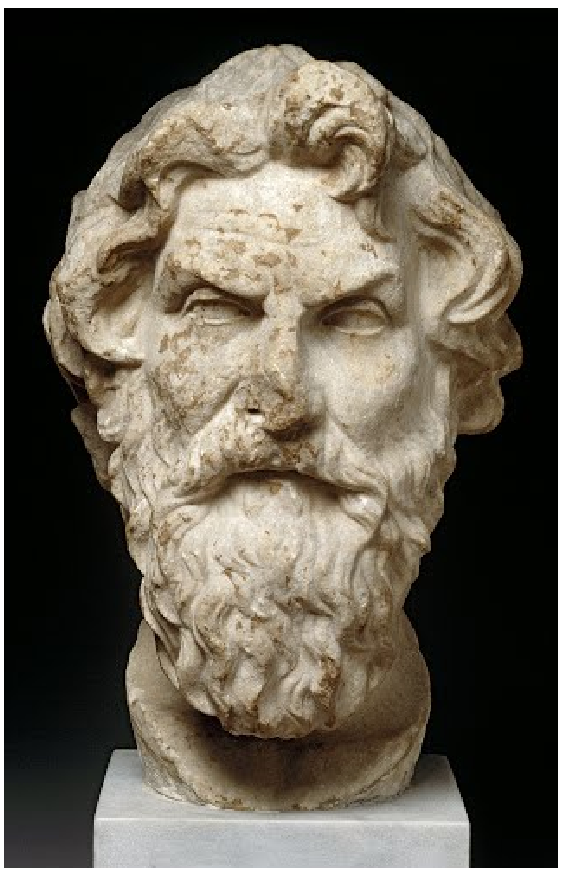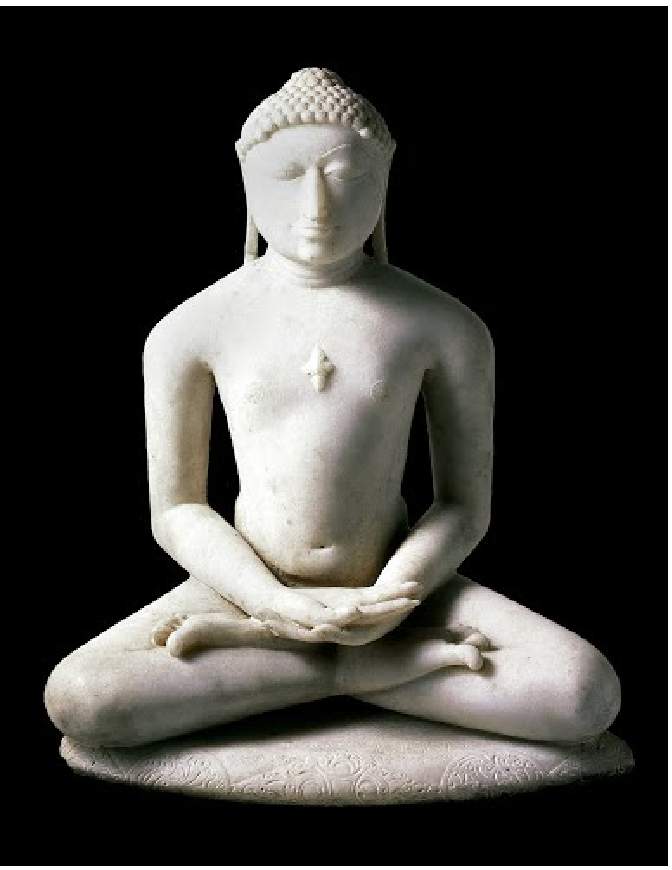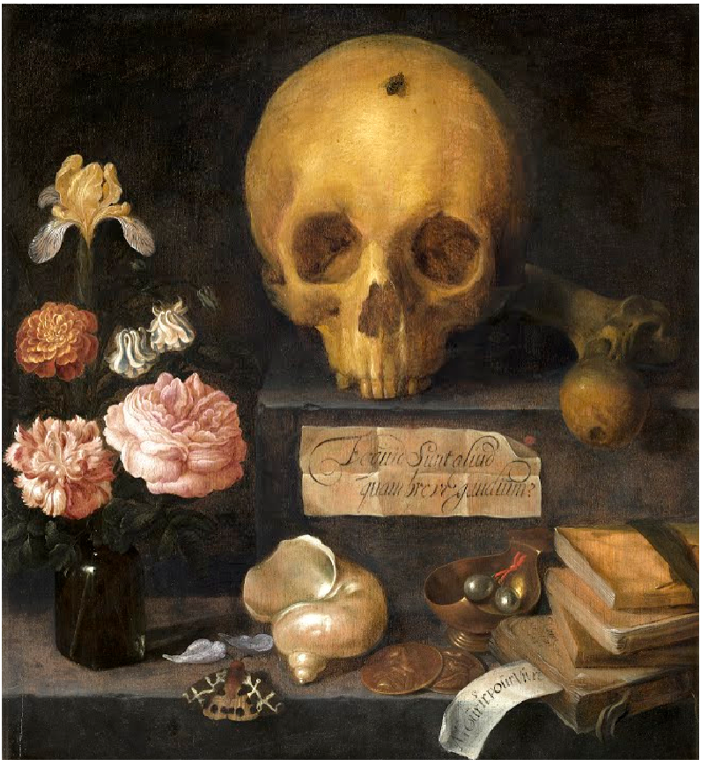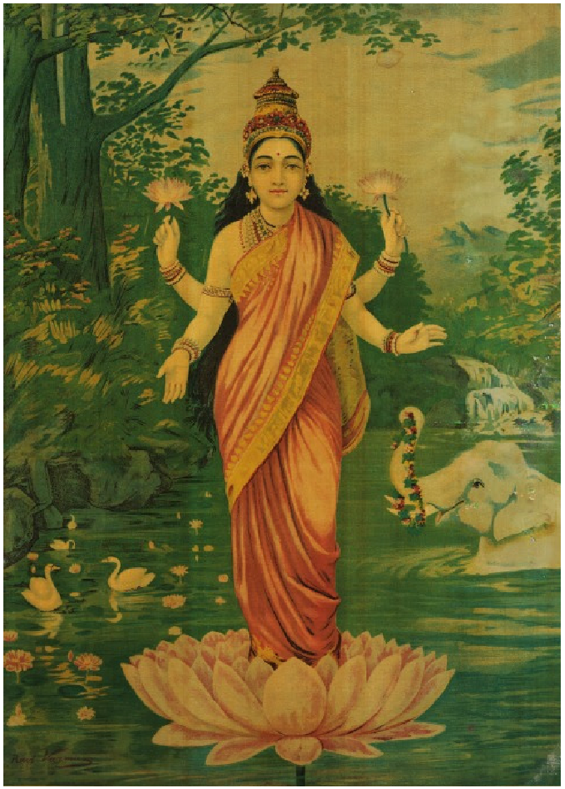The topic of happiness in arts is ubiquitous and is presented in various ways. This essay exhibits ten different pieces of art that are linked with this theme. Happiness can be nurtured and prolonged by practicing virtue and attaining knowledge; however, it is short-lasting, and woe is unavoidable in the world.
Numerous ancient philosophers around the world theorized about pleasure, joy, and happiness. In ancient Greece, Antisthenes, who was close to Socrates, claimed that happiness should be the highest goal and it should be learnt through practicing virtuous behavior (Figure 1). His words were valued and respected as he was considered a founder of the Cynic school of philosophy. A famously known Diogenes, who lived in a barrel, was one of the numerous followers of the Cynic school of philosophy. Yet, it was not only Greek philosophers who theorized about pleasure in this way.

Another valuable item that appears in this exhibition is the Indian Marble statue of a tirthankara. The work title refers to ‘ford-maker’, which means that Tirthankaras create and find fords for people to cross from misery to happiness and knowledge (Figure 2). These wise individuals are named Jinas because they teach how to develop the virtue of self-control to finally reach enlightenment within. They transfer their life knowledge to others to make them more aware of what personal qualities are required to fight off misery and gain pleasure. This way, the premise of the Marble statue resembles that of the portrait of Antisthenes, namely, that happiness is the greatest good and it can be attained by nurturing goodness.

Although happiness can be learned, it remains to be temporary. A highly symbolic artwork Vanitas Still Life created by a Dutch artist Adriaen van Nieulandt in 1636, demonstrates that happiness on Earth is always brief (Figure 3). Since all material degrades and vanishes, the long-lasting joy is a myth. The skull and the bone depict the unavoidable final, which is death. In addition, the flowers symbolize the shortness of all life phenomena as their blossoming lasts for an inconsiderable time period. On the other hand, numerous beautiful things are concentrated in the natural world (the butterfly, seashells, and the pearls) that help people gain happiness, albeit temporarily.

The critics of the proposed thesis statement may argue that happiness can be achieved through material success and possession of power. The work Lakshmi drawn by another Indian painter, Raja Ravi Varma, in the 1930s, illustrates an Indian goddess called Lakshmi (Figure 4). She is regarded to be the goddess of wealth; however, she represents a range of other earthly attributes. The most important of them are royal power, luck, prosperity, well-being, and happiness. The author of the illustration argues that happiness and well-being are directly related to wealth and prosperity. However, since people experience happiness within themselves, it lacks a strong connection with the outer conditions. Instead, it should be nurtured through spiritual practices and ethical behavior.

This exhibition comprised of art pieces of a different kind and acquired from various civilizations serves to present happiness through different angles. Specifically, it can be taught and mastered through ethical practices. However, regardless of how benevolent a person is, he or she is still unable to gain long-term happiness due to its short-lasting nature.
Overall, this exhibition aimed to remind the viewer how various cultures thought of this phenomenon. It is amazing how philosophers proposed the same ideas while living in entirely different social environments and time periods. Finally, this exhibition is an example of how a wide range of artifacts (paintings, statues, portraits, coins, and a monument) can add something unique and valuable to the topic.
Reference
Google Arts & Culture. (n.d.). Museum explorer.